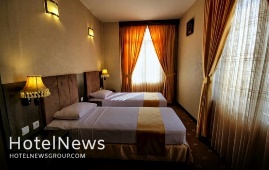
A total of 2007 beds is expected to be added to the hospitality sector of West Azarbaijan province, the provincial tourism chief has said. Currently, 41 tourism-related projects including hotels, apartment hotels, eco-lodges, and tourist complexes are underway across the northwestern province, Jalil Jabbari announced on Sunday. The province will increase its accommodation capacity by 974 rooms and 2007 beds through the opening of the mentioned ongoing projects, the official added. So far, the projects have progressed by 42 percent, he noted. Back in April, the official announced that tourism-related projects generated 1,767 job opportunities across the province during the past Iranian calendar year 1399 (ends March 21). “The largest number of jobs is related to the issuance of licenses for handicraft producers, which has led to the employment of 549 persons,” he noted. Iran considers reopening borders to foreign vacationers as its new tourism minister has said the government will soon scrap visa restrictions. Though international tourism has revealed signs of a rebound as some destinations eased travel restrictions over the past couple of months, the lack of international coordination and slow vaccination rates in several countries and regions suggest it may need a longer time to bounce back. On the one hand, according to the latest edition of the UNWTO World Tourism Barometer, an estimated 54 million tourists crossed international borders in July 2021, down 67% from the same month in 2019, but the strongest results since April 2020. This compares to an estimated 34 million international arrivals recorded in July 2020, though well below the 164 million figure recorded in 2019. On the other hand, another research conducted by Oxford Economics on behalf of the World Travel and Tourism Council (WTTC) reveals that countries’ GDP is expected to increase only by less than one-third, as tourism is recovering even slower than expected. The research was based on the current vaccination rates globally, consumer confidence, and less stringent entry and travel restrictions in the world. However, prospects for September-December 2021 remain mixed, according to the latest UNWTO Panel of Experts survey, with 53% of respondents believing the period will be worse than expected. Only 31% of experts expect the point to better results towards the end of the year. The survey also shows that most tourism professionals continue to expect a rebound driven by unleashed pent-up demand for international travel in 2022, mostly during the second and third quarters. West Azarbaijan embraces a variety of lush natural sceneries, cultural heritage sites, and museums including the UNESCO sites of Takht-e Soleyman and Qareh Klise (St. Thaddeus Monastery), Teppe Hasanlu, and the ruined Bastam Citadel. The region was home to several ancient civilizations. According to Britannica, it was conquered by Alexander the Great in the 4th century BC and was named Atropatene after one of Alexander’s generals, Atropates, who established a small kingdom there. Ultimately, the area returned to the Persian (Iranian) rule under the Sasanians in the 3rd century CE.
Create: Oct 13, 2021 Edit: Oct 13, 2021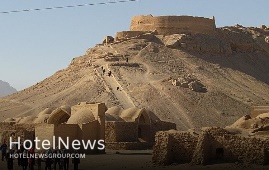
The enigmatic Zoroastrian Towers of Silence are set on two lonely, barren hilltops on the southern outskirts of Yazd in central Iran. According to a tradition dating back over 3,000 years, dead bodies were left on top of those open towers – which are also called dakhmas -- to be slowly disengaged or picked apart by desert vultures. Under ancient Zoroastrian beliefs about the purity of the Earth, dead bodies were not buried but left in these uncovered stone towers so that vultures could pick the bones clean. Narratives say that men’s corpses were placed in the outer circle, while women’s were left in the middle, and children in the inner-most ring. Bodies were then left until their bones were bleached by the elements and stripped by the vultures. After the process of purification, bones were placed in ossuaries near, or inside the towers. Ossuaries from these rituals have been discovered from the 4th and 5th centuries BC. At the foot of the hills are several other abandoned Zoroastrian buildings, including a defunct well, cistern, kitchen, and a lavatory. As Iran developed and urbanized, dakhmas became increasingly closer to city limits, severely curtailing their use. Since the 1970s, the use of dakhmas has been illegal in Iran, forcing orthodox Zoroastrians to adapt to new burial methods. According to Encyclopedia Britannica, such towers are about 25 feet (8 m) high, built of brick or stone, and contain gratings on which the corpses are exposed. After vultures have picked the bones clean, they fall into a pit below, thereby fulfilling the injunction that a corpse must not suffer contact with either fire or earth. Zoroastrian Towers of Silence are currently one of the famed travel destinations of Yazd, which is a cradle of Zoroastrianism. In July 2017, the historical texture of the city of Yazd was named a UNESCO World Heritage. Wedged between the northern Dasht-e Kavir and the southern Dasht-e Lut on a flat plain, the oasis city enjoys a very harmonious public-religious architecture that dates from different eras. With its winding lanes, a forest of badgirs (wind catchers), mud-brick houses, atmospheric alleyways, and centuries of history, Yazd is a delightful place to stay, referring to as a ‘don't miss’ destination by almost all travel associates in the region. Yazd Jameh Mosque, Dowlatabad Garden, the Yazd Atash Behram, also known as Atashkadeh-e Yazd, Towers of Silence, and adjacent desert landscape are among its tourist sites. Here is a selection of comments that visitors to the Zoroastrian Towers of Silence have posted to TripAdvisor, one of the most popular travel websites in the world: ‘Wonderful’ Should be visited to understand the ancient beliefs of Zoroastrians... This is a place where are the Zoroastrians buried their dead in the sky... (Fatih U from Izmir, Turkey) ‘Eerie’ A must site to visit if you are in Yazd to check out how the Zoroastrians dispose of their dead as they believed that after death the soulless body is impure and by burying the impure corpse in the ground, the soil becomes contaminated with impurity. (shadgerami from Nikolayevsk-on-Amur, Russia) ‘An extraordinary site’ We had planned to visit a dakhma when we toured Uzbekistan but had to give it a miss, so I was eager to visit these in Yazd. I had not realized that buildings are having a ritual function associated with the dakhma. Each family has its own building where a final funerary meal is eaten before the deceased is taken to the dakhma for excarnation. It was fascinating to walk around that part of the site before ascending the dakhma. The ascent is quite steep but aided by proper steps. Once in the main platform, there are excellent information boards in English explaining the processes undertaken. (Rod F from Royal Wootton Bassett, UK) ‘Spookily beautiful’ It is one of the most interesting sites we visited on our trip to Iran and one of the greatest reasons to add Yazd to the tour program. Totally recommended! (Muge S from Istanbul, Turkey) ‘A unique place to visit’ I can imagine how hot it must be here in the summer... we visited Yazd at Christmas time and the weather was perfect, sunny but not too hot. Climbing up to the hill makes you sweat but standing right where the corpses were left is a unique experience that catches one’s imagination. There are helpful postings in English that help you understand the context and the customs. You really can’t miss this if you visit Yazd. (Joscar00 from Stockholm, Sweden) ‘Interesting history!’ Easy walk/hike to the top. One of the towers is on a much higher level than the other. Best time to go early morning or before the sunset. (Aida B from Los Angeles) ‘Very interesting place with strong energy flow’ Don’t miss the whole story of this place as it makes it so unique and special. Going up is essential to see the whole place. Also, it gives good views around. There is very strong energy there. Going up to one of the towers is rather enough but you can choose the less popular one. This place is worth 20 min drive from the city center. (Very-sunny from Lodz, Poland) ‘A very interesting and beautiful place’ For millennia and until recently, in the 1970s, this place was used to dispose of the dead, a high priest would chop the pieces of the bodies to be fed to the birds. It is located outside the city and you can visit it on tour or by taxi. There are some temples or buildings at ground level and then you have the two hills with their sanctuaries on top. A great experience. (Etienne T. form New York) ‘Must do in Yazd’ A unique place to visit. Read a bit about the background before you come as all explanation is only in Farsi. Walk up the tower and try to imagine how the burial ceremony must have been like in those days. A must-do when in Yazd. (Isabella Deruiter form Rotterdam, the Netherlands) ‘Iconic place in Yazd with very interesting history’ This place is an essential part of the Zoroastrian religion, where the followers lay their dead loved ones' bodies at the top of the tower for the scavenging birds and weather to 'disintegrate' the bodies. The ascent to the top requires a basic level of fitness but the view of Yazd city from the top is good. I remember seeing motorbikes that bring you to the top too. (Wei T. from Singapore)
Create: Oct 13, 2021 Edit: Oct 13, 2021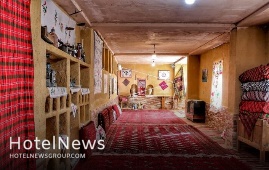
The private sector has invested 22 trillion rials (some $523 million at the official exchange rate of 42,000 rials per dollar) in the tourism sector of the northeastern province of North Khorasan during the first half of the current Iranian calendar year (started March 21). This investment has been put into 12 ongoing projects across the province, which are being carried out by the private sector, the provincial tourism chief has announced. A greater volume of investments in the tourism industry is required to accomplish the efforts being made to present the province in a true and correct light to the international community, Ali Mostofian said on Monday. Local travel insiders believe that traveling in North Khorasan is gaining momentum by degrees, creating lucrative opportunities for the tourism industry. According to Lonely Planet, most foreign tourists pass straight through North Khorasan in transit between Mashhad and Gorgan, but if you have time to explore, it's worth diverting south from the capital, Bojnurd, towards Esfarayen, famed for its wrestling tournaments, the remarkable citadel of Belqays and the partly preserved stepped village of Roein some 20km north.
Create: Oct 13, 2021 Edit: Oct 13, 2021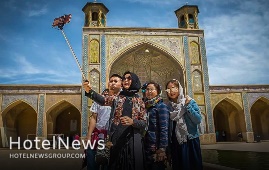
Though international tourism has revealed signs of a rebound as some destinations eased travel restrictions over the past couple of months, the lack of international coordination and slow vaccination rates in several countries and regions suggest it may need a longer time to bounce back. On the one hand, according to the latest edition of the UNWTO World Tourism Barometer, an estimated 54 million tourists crossed international borders in July 2021, down 67% from the same month in 2019, but the strongest results since April 2020. This compares to an estimated 34 million international arrivals recorded in July 2020, though well below the 164 million figure recorded in 2019. On the other hand, another research conducted by Oxford Economics on behalf of the World Travel and Tourism Council (WTTC) reveals that countries’ GDP is expected to increase only by less than one-third, as tourism is recovering even slower than expected. The research was based on the current vaccination rates globally, consumer confidence, and less stringent entry and travel restrictions in the world. However, prospects for September-December 2021 remain mixed, according to the latest UNWTO Panel of Experts survey, with 53% of respondents believing the period will be worse than expected. Only 31% of experts expect the point to better results towards the end of the year. The survey also shows that most tourism professionals continue to expect a rebound driven by unleashed pent-up demand for international travel in 2022, mostly during the second and third quarters. Almost half of all experts (45%) continue to see international tourism returning to 2019 levels in 2024 or later, while 43% point to a recovery in 2023. By regions, the largest share of experts pointing to a return to 2019 levels in 2024 or later are in Asia and the Pacific (58%). In Europe, half of the respondents indicate this could happen in 2023. West Asia is the most optimistic, with a full recovery expected by 2022. The sector needs leaders who can recognize ideas that will make a difference, who will innovate and back entrepreneurs and start-ups. As mentioned by the UNWTO Barometer, most destinations reporting data for June and July 2021 saw a moderate rebound in international arrivals compared to 2020. Nevertheless, 2021 continues to be a challenging year for global tourism, with international arrivals down 80% in January-July compared to 2019. Asia and the Pacific continued to suffer the weakest results in the period January to July, with a 95% drop in international arrivals compared to 2019. West Asia (-82%) recorded the second-largest decline, followed by Europe and Africa (both -77%). The Americas (-68%) saw a comparatively smaller decrease, with the Caribbean showing the best performance among world subregions. Meanwhile, some small islands in the Caribbean, Africa, and Asia and the Pacific, together with a few small European destinations recorded the best performance in June and July, with arrivals close to, or sometimes exceeding pre-pandemic levels.” Iran preparing for tourism rebound Iran considers reopening borders to foreign vacationers as its new tourism minister has said the government will soon scrap visa restrictions. Cultural Heritage, Tourism and Handicrafts Minister Ezzatollah Zarghami made the announcement last month following his conversations with President Seyyed Ebrahim Raisi, however, the minister did not specify the date upon which those regulations would be scrapped. According to some sources, fully vaccinated travelers would be embraced first under the updated regulations. The average of international travels to and from the Islamic Republic fell by 80 percent during the past Iranian calendar year 1399 (ended on March 20, 2021) from a year earlier. “During this period, 4,343,163 passengers entered the country, which included 3,030,464 Iranian passengers and 512,699 international travelers,” according to Arezou Ghaniun, an official with the Islamic Republic of Iran's Customs Administration. “From the beginning of 1399 to the end of it, we saw a significant reduction in passenger traffic to the country or vice versa in land, sea, rail and air borders, which were caused by various coronavirus restrictions.” Months of steep recession has taken its toll. Many travel insiders, hoteliers, and tour operators have faced big dilemmas such as bankruptcy, unemployment, debts, and the prospects of not being competitive on the international level. Panels of travel experts have mapped out new marketing strategies hoping Iran’s tourism would get back on its feet once again. For instance, the Head of the Iranian Tour Operators Association has said the international tourist flow to Iran will return to normal until 2022. Iran is potentially a booming destination for travelers seeking cultural attractions, breathtaking sceneries, and numerous UNESCO-registered sites. Under the 2025 Tourism Vision Plan, Iran aims to increase the number of tourist arrivals from 4.8 million in 2014 to 20 million in 2025. Domestic tourism as a propeller in COVID era The annual UNWTO Executive Training Programme, which was held in the Maldives from October 5 to 8, sharpened the focus on harnessing the power of domestic tourism to drive recovery and growth in destinations across Asia and the Pacific. Now in its 15th year, the event brought together representatives of 25 countries, with six (Iran, Sri Lanka, Afghanistan, Bangladesh, Mongolia, and Nepal) joining hosts in the Maldives to attend the training sessions in person. Reflecting the restart of domestic tourism ahead of international tourism, both across Asia and the Pacific and globally, the event focused on enabling destinations of all sizes to capitalize on this trend. Opening the event, UNWTO Secretary-General Zurab Pololikashvili stressed that, as tourism restarts in many parts of the world, “the sector needs leaders who can recognize ideas that will make a difference, who will innovate and back entrepreneurs and start-ups”. Confidence in travel rising sluggishly Such an enhancement was underpinned by the reopening of many destinations to international travel, mostly in Europe and the Americas. The relaxation of travel restrictions for vaccinated travelers, coupled with the progress made in the roll-out of COVID-19 vaccines, contributed to lifting consumer confidence and gradually restoring safe mobility in Europe and other parts of the world. In contrast, most destinations in Asia remain closed to non-essential travel. According to UNWTO Secretary-General Zurab Pololikashvili, there is a strong demand for international tourism, and many destinations have started welcoming visitors back safely and responsibly. However, the true restart of tourism and the benefits it brings remains on hold as inconsistent rules and regulations and uneven vaccination rates continue to affect confidence in travel,” Pololikashvili says.
Create: Oct 10, 2021 Edit: Oct 10, 2021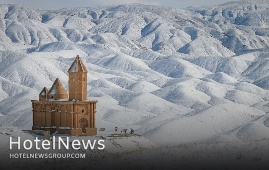
A project to restore and reinforce the ancient Saint John Church has begun in the village of Sohrol, near Shabestar city in East Azarbaijan province, the deputy provincial tourism chief has announced. The project involves the reinforcement of the church’s main structure and its foundation, as well as repairing the damaged parts, Alireza Quchi said on Saturday. Rehabilitation work has been ongoing on the historical structure for the past several years in order to make it stronger, the official added. Last year retaining walls for stabilizing soil around the monument were constructed to prevent it from being swept away by a landslide, he explained. Also known as Sohraqeh Church, the Armenian Catholic church was built in circa 5th century, but it was rebuilt on the older church foundation in 1840 by Samson Makintsev, a Russian general in the service of Iran during the Qajar era. The historical monument was inscribed on the National Heritage list in 1968. Iran is home to several ancient and historical churches. Christians, Jews, and Zoroastrians are the most significant religious minorities in the country with Christians constituting the bulk. Iranian Azarbaijan was the center of several ancient civilizations. It formed part of Urartu and later of Media. In the 4th century BC, it was conquered by Alexander the Great and was named Atropatene after one of Alexander’s generals, Atropates, who established a small kingdom there. The area returned to Persian (Iranian) rule under the Sasanians in the 3rd century CE.
Create: Oct 10, 2021 Edit: Oct 10, 2021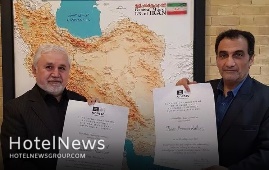
Certificates of registration of four Iranian UNESCO World Heritage sites have been handed over to the tourism ministry, the deputy tourism minister has announced. The Ministry of Cultural Heritage, Tourism, and Handicrafts has received registration certificates of four cultural heritage, which have been listed by UNESCO over the last two years, IRNA quoted Ali Darabi as saying on Friday. The ministry has received certificates for Trans-Iranian Railway, Cultural Landscape of Uramanat as tangible cultural heritages as well as the art of miniature, jointly with Azerbaijan, Turkey, and Uzbekistan and pilgrimage to St. Thaddeus jointly with Armenia, as UNESCO Intangible Cultural Heritage, the official added. Having a global register of tangible and intangible heritage is vital because these works, regardless of race, nationality, and religion, belong to all human society, and all governments and nations have a duty to preserve and protect them, even during times of war, he noted. Increased recognition of a country’s cultural heritage on the World Heritage list certainly contributes to the development of the tourism industry and businesses related to it, and most importantly, introduces the culture and civilization of a nation to the world, he explained. With 26 World Heritage Sites, Iran ranks 10th in the world in terms of the number of historical monuments and sites registered on the UNESCO World Heritage list. Before the Islamic Revolution, Persepolis, Naghsh-e Jahan Square, and Choghaznabil were the only three UNESCO-listed monuments, but today the number has been increased this number to 26 historical sites. Trans-Iranian Railway The railway can be regarded as a turning point for comprehensive developments in Iran. These developments include a wide spectrum of various economical, commercial, social, cultural, and even political aspects in a sensitive and important period of contemporary world history. Consequently, the 1394 kilometers long Trans-Iranian Railway was built with a width of 1435mm and 90 working stations along its route. It starts at a point north of Torkaman port located southeast of the Caspian Sea. After going through Sari and Qaem-Shahr cities, the railway enters the mountainous region of Alborz through the high Firooz-kooh Pass which is linked with Tehran and Varamin Plain by numerous bridges and tunnels. Further on after crossing the flatlands of Qom and Arak, the Trans-Iranian Railway penetrates Zagros highlands in Lorestan Province and passing through a large number of tunnels and bridges reaches Andimeshk situated in the low Kuzestan Plain. Finally extending to the vicinity of Dezful, Ahwaz, and its grand bridge on Karoon, the Trans-Iranian Railway is divided into two branches ending separately at Khoram-Shahr and Imam-Khomeini ports on the Persian Gulf. Cultural Landscape of Uramanat Stretched on the slopes of Sarvabad county, and shared between the provinces of Kordestan and Kermanshah, the rural area of Uramanat embraces dense and step-like rows of houses in a way that the roof of each house forms the yard of the upper one, a feature that adds to its charm and attractiveness. As the cultural landscape covers 300 villages and in terms of architecture and landscape, it is one of the most beautiful and presentable heritages in the world. Uraman is considered a cradle of Kurdish art and culture from the days of yore. Pirshalyar, which is named after a legendary local figure, is amongst time-honored celebrations and rituals that are practiced annually across the region. The art of miniature The miniature is a type of two-dimensional artwork that involves the design and creation of small paintings on books, paper-mâché, rugs, textiles, walls, ceramics, and other items using raw materials such as gold, silver, and various organic substances. Historically, the miniature was exemplified by book painting in which the text was supported visually, but the element has evolved and can also be observed in architecture and as an adornment in public spaces. The miniature displays a specific type of perspective in which the size of the figures changes according to their importance - a key difference between realistic and naturalistic styles. Though it has existed for centuries, it continues to develop and thus strengthens the bonds between past and present. Traditional painting principles and techniques are preserved, but artists also bring individual creativity into the process. Pilgrimage to the St. Thaddeus The annual three-day pilgrimage to St. Thaddeus Apostle Monastery in northwestern Iran is held each July. The pilgrimage venerates two prominent saints: St. Thaddeus, one of the first apostles preaching Christianity, and St. Santukhd, the first female Christian martyr. The bearers of the element are the Armenian population in Iran, Iranian-Armenians residing in Armenia, and followers of the Armenian Apostolic Church. Pilgrims gather in Tabriz before departing for the monastery. They cover 700 kilometers from Yerevan to the monastery annually. The commemoration ceremony includes special liturgies, processions, prayers, and fasting. It culminates in a Holy Mass with Holy Communion. Special times are set aside for traditional Armenian folk performances and Armenian dishes are served. The pilgrimage is the primary social and cultural event of the year.
Create: Oct 10, 2021 Edit: Oct 10, 2021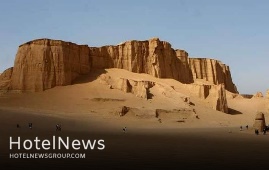
A clean-up project has recently been completed on Shahdad, part of the UNESCO-registered Lut desert, a local tourism official has announced. The project was carried out in collaboration with some eco-lodge owners nearby on the occasion of National Tourism Week (September 27-October 4), Hojjat Ebrahimizadeh said on Saturday. The project involved cleaning and collecting garbage left by some tourists in this area, the official added. Shahdad Desert receives a large number of tourists each year, making it imperative to adhere to hygienic principles so they can continue to enjoy its beautiful nature, he noted. Tourists are hence advised to collect their garbage from the region before they leave, he explained. Situated in southeastern Kerman province, Shahdad is home to shifting sands, salt plains, meteorite fields, and rocky terrain, which offers visitors breathtaking vistas and unparalleled serenity of the intact nature and wilderness. It has long been a destination for adventurers, nature lovers, off-roaders, and trekkers. The Lut Desert, widely referred to as Dasht-e Lut (“Emptiness Plain”), is a large salt desert encircled by the provinces of Kerman and Sistan- Baluchestan, and South Khorasan. It is the world’s 27th-largest desert and was inscribed on UNESCO’s World Heritage List on July 17, 2016. Seven years of satellite temperature data analyzed by NASA show that the Lut Desert is the hottest spot on Earth. Based on the research, it was the hottest during 5 of the 7 years and had the highest temperature overall: 70.7°C in 2005. The desert is also considered one of the top areas in the world for finding meteorites, thanks to its unique parameters. In recent years, significant finds have been made, with the efforts of national and international teams of researchers.
Create: Oct 9, 2021 Edit: Oct 9, 2021
Iran is prepared to repair and restore Syrian historical monuments and tourism infrastructure that have been destroyed by the Islamic State in Iraq and Syria (ISIS), the deputy tourism minister Ali-Asghar Shalbafian has announced. He made the remarks during a meeting with the Syrian Minister of Economy and Foreign Trade Mohammad Samer al-Khalil on Sunday in the Expo 2020 Dubai. “The Iranian restorers can then exchange experiences with Syrian specialists,” the official added. He also emphasized Iran’s readiness to strengthen communication and develop tourism ties between the two countries. Health tourism and medical tourism is one of Iran's most important strengths in the tourism sector, and we welcome Syrian tourists to make use of this opportunity,” he noted. Al-Khalil for his part said that there is an increasing interest among Syrian tourists in visiting Iran, especially its northern coasts, as well as to Iranian holy cities, so the necessary grounds need to be created. The Expo 2020 Dubai opened on Thursday with a lavish ceremony of fireworks, music, and messaging about the power of global collaboration for a more sustainable future. Iran’s pavilion in the world fair is planned to showcase each Iranian province’s strengths and assets in tourism, cultural heritage, handicrafts, as well as its natural sites, traditional ceremonial practices, and historical significance. Many countries and companies are also looking to the expo - the first major global event open to visitors since the coronavirus pandemic - to boost trade and investment. According to organizers, the Expo, an exhibition of culture, technology, and architecture under the banner “Connecting Minds and Creating the Future”, is expected to be a demonstration of ingenuity, and a place where global challenges such as climate change, conflict, and economic growth can be addressed together. The Persian Gulf state has relaxed most coronavirus limitations but Expo requires face masks to be worn and for visitors over 18 to be vaccinated against, or test negative for, COVID-19. Iran expects to reap a bonanza from its numerous tourist spots such as bazaars, museums, mosques, bridges, bathhouses, madrasas, mausoleums, churches, towers, and mansions, of which 26 being inscribed on the UNESCO World Heritage list.
Create: Oct 3, 2021 Edit: Oct 9, 2021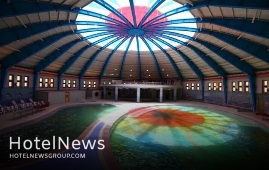
A modern hydrotherapy center was inaugurated in the tourist city of Meshkinshahr, northwestern Ardebil province, on Friday. A budget of 160 billion rials ($3.8 million at the official exchange rate of 42,000 rials per dollar) was allocated to the project, the provincial tourism chief announced during the inauguration ceremony. Situated in the Qutursui tourist area, the center has the most acidic mineral spa in the world, CHTN quoted Nader Fallahi as saying. Water for the hydrotherapy center is sourced from hot water springs in the area, which is beneficial for skin ailments, the official added. This new complex, which features separate sections for women and men, will allow Meshkinshahr to attract more tourists from abroad and grow its tourism industry twice as fast as before, he noted. Meshkinshahr embraces several historical sites including Qale Khohneh (“Old Castle”), the ancient site of Shahr-e Yeri, and Qahqaheh castle. Situated near the high Mount Sabalan, Meshkinshahr enjoys a moderate mountainous climate and the Sabalan summit can be seen in the south of the city with eye-catching sceneries. The antiquity of the city dates back to the early centuries of Islam but in the Safavid era, it was thriving even more. The city is well known for its rugs and its mineral springs. Meshkinshahr suspension bridge with 345 meters long, 3 meters wide, and 80 meters high, which was inaugurated in 2015 and is said to be the largest of its kind in West Asia, is also one of the top tourist destinations of the city.
Create: Aug 1, 2021 Edit: Aug 1, 2021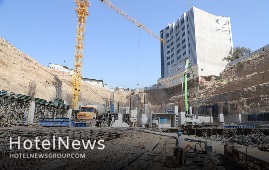
A total of 17 hotels and apartment hotels are being constructed across the central province of Qom, adding 2894 beds to the province’s hospitality sector. Over 16 trillion rials (about $381 million at the official exchange rate of 42,000 rials per dollar) has been invested in the hotel projects, the provincial tourism chief has said. Upon their completion in the near future, these hotels are expected to generate 936 job opportunities, Alireza Arjmandi announced on Saturday. In parallel with the growth of tourism, related industries, such as transportation, souvenir, and handicraft supply centers, will also expand, which could lead to economic prosperity, the official added. The second-holiest city of the country after Mashhad, Qom is home to both the magnificent shrine of Hazrat-e Masumeh (SA) and the major religious madrasas (schools). Apart from sightseers and pilgrims who visit Qom to pay homage at the holy shrine, the city is also a top destination for Shiite scholars and students who come from across the world to learn Islamic studies at its madrasas and browse through eminent religious bookshops. The antiquity of Qom goes back to the Sassanid era (224 CE–651) and several historical mosques, mansions, and natural sceneries have been scattered across the city as well as towns and villages nearby.
Create: Aug 1, 2021 Edit: Aug 1, 2021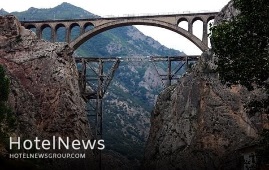
Trans-Iranian Railway that reaches a length of 1400 km has been declared a UNESCO World Heritage site. The UN body accepted Trans-Iranian Railway during the 44th session of the World Heritage Committee, which will be running through July 31 in China’s Fuzhou. The railway can be regarded as a turning point for comprehensive developments in Iran. These developments include a wide spectrum of various economical, commercial, social, cultural, and even political aspects in a sensitive and important period of contemporary world history. Under the Pahlavi regime, the process of moving towards modernism gained momentum and the railway became the main pedestal of development in Iran. Consequently, the 1394 kilometers long Trans-Iranian Railway was built with a width of 1435mm and 90 working stations along its route. It starts at a point north of Torkaman port located southeast of the Caspian Sea. After going through Sari and Qaem-Shahr cities, the railway enters the mountainous region of Alborz through the high Firooz-kooh Pass which is linked with Tehran and Varamin Plain by numerous bridges and tunnels. Further on after crossing the flatlands of Qom and Arak, the Trans-Iranian Railway penetrates Zagros highlands in Lorestan Province and passing through a large number of tunnels and bridges reaches Andimeshk situated in the low Kuzestan Plain. Finally extending to the vicinity of Dezful, Ahwaz, and its grand bridge on Karoon, the Trans-Iranian Railway is divided into two branches ending separately at Khoram-Shahr and Imam-Khomeini ports on the Persian Gulf.
Create: Jul 28, 2021 Edit: Jul 28, 2021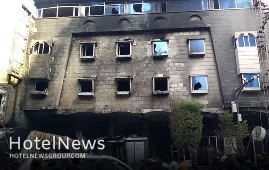
A fire broke out at a hotel in Iraq’s southern city of Karbala on Sunday killing one child, civil defence officials said. Fire fighters and civil defence teams managed to rescue 78 people after the blaze inside the four-story Dai Al Hussain Hotel in the centre of the city. The cause of the fire has not been disclosed, although authorities said an investigation has been opened. “A girl died in hospital due to smoke inhalation which caused her to suffocate despite attempts to resuscitate her,” civil defence statement said. There have been numerous fires in Iraq this year, including in a Covid-19 facility in the southern city of Nasiriyah in Dhi Qar governorate, which killed more than 60 people. Police have said the blaze at Al Hussein hospital earlier this month was due to faulty wiring that caused an oxygen tank to explode. Citizens blame corruption, negligence and mismanagement in various sectors of government for the disasters. Prime Minister Mustafa Al Kadhimi ordered the arrest of top health officials last week, following the deadly fire in Nasiriyah. President Barham Salih and Mr Al Kadhimi blamed the fire on negligence cause by corruption and political interference in the management of the hospital, and vowed to take action. Iraq's former health minister, Hassan Al Timimi, resigned in April following a fire in Baghdad's Ibn Al Khateeb hospital that killed at least 82 people. Most of them were Covid-19 patients who needed ventilators to help them breathe. The cause of the fire was also an oxygen tank explosion. The coronavirus pandemic has put a heavy strain on Iraq's health services. Before the outbreak of the coronavirus pandemic hospitals across the country were already struggling to provide patients with a good standard of care. The healthcare system has been affected by years of mismanagement, a lack of accountability, violence and factionalism since the US-led invasion in 2003, and before that by years of sanctions.
Create: Jul 19, 2021 Edit: Jul 19, 2021